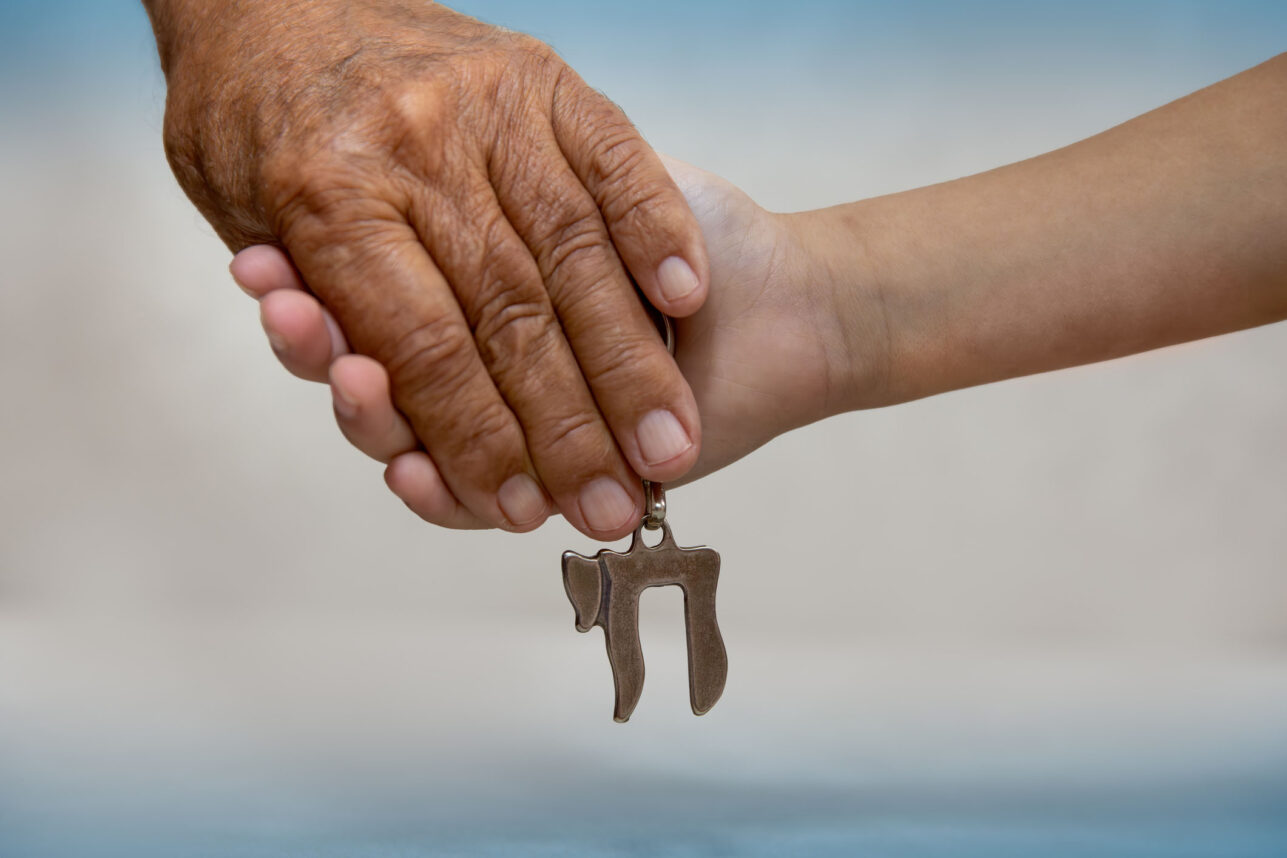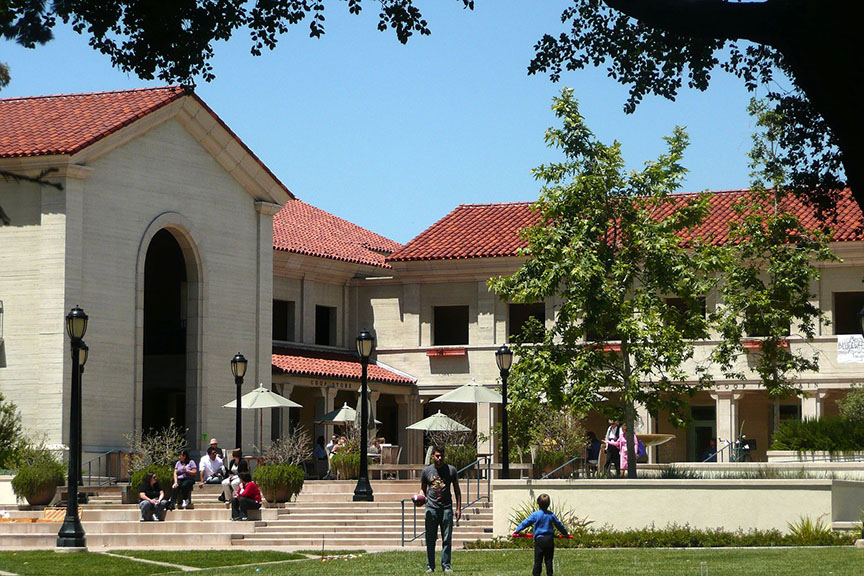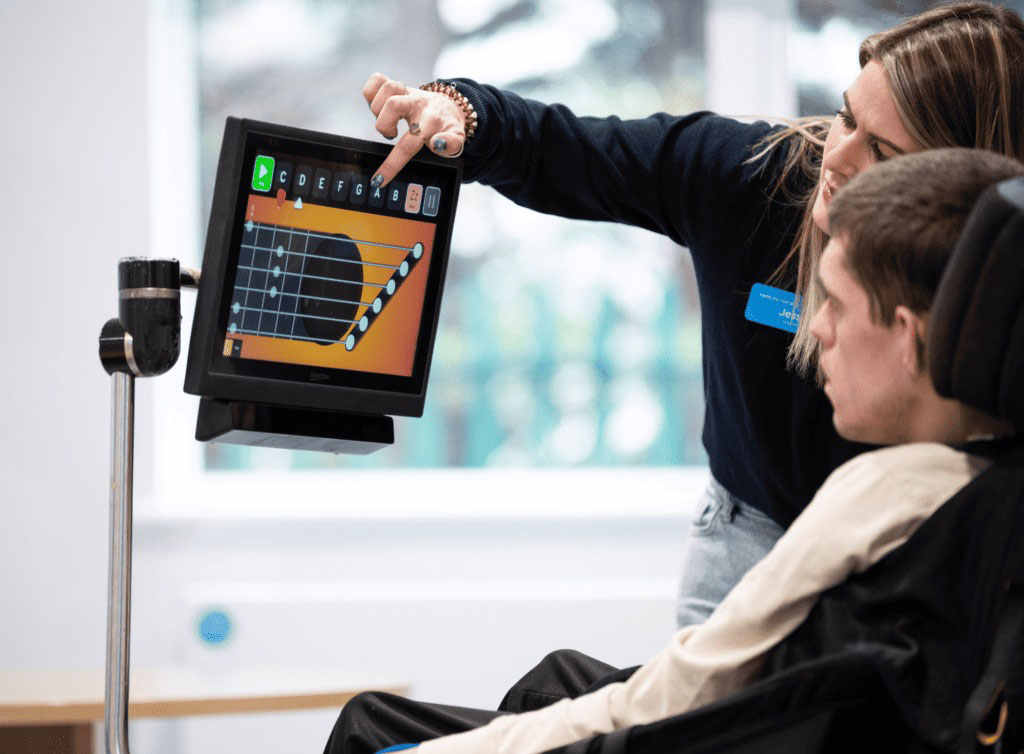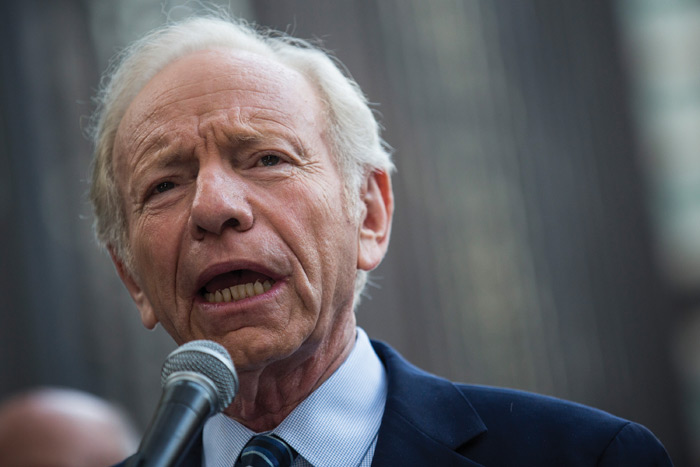For the Los Angeles art scene — its masters, its patrons, its admirers, its dissenters, and even its casual followers — the passing of Stanley and Elyse Grinstein, co-founders of the artists’ workshop and publishing house Gemini G.E.L., marked the end of a pivotal era. Among the L.A. cultural world’s movers and shakers, its advocates and philanthropists whose generosity helped generate the thriving scene that exists today, the Grinsteins were among those at the nucleus.
But for me, the passing of my Great-Aunt Elyse at age 87 in July — as she joined my Great-Uncle Stanley, who died at 86 in 2014 and was already residing at Hillside Cemetery — the loss was more personal. It was the culmination of another kind of era, one that only a few of us, lucky enough to be invited to the unending private exhibition inside the private gallery of their private lives, were able to experience. The loss of Aunt Elyse and Uncle Stanley marked the end of an era that helped to shape my family.
My grandmother, Gayle and her older sister, Elyse, grew up in Beverly Hills on South Palm Drive, in a home that my great-grandfather JJ Schlanger bought from famed Jewish boxer and entertainer, “Slapsie” Maxie Rosenbloom. The two girls attended Beverly Vista Elementary School and matriculated into Beverly Hills High School. Both went to USC, and it was there that my grandmother met my grandfather, optometrist Martin Prince, and where Aunt Elyse met Uncle Stanley.
In 1966, along with his fraternity brother and best friend Sidney Felsen and master printer Ken Tyler, Uncle Stanley founded Gemini G.E.L., a seminal art print house and gallery — a portion of which would be designed by Frank Gehry. The workshop hosted artists such as David Hockney, Roy Lichtenstein, Robert Rauschenberg, Ed Ruscha, Man Ray, John Baldessari, Ellsworth Kelly, Richard Serra, Guy Dill, Laddie John Dill, Ed Moses, Judy Chicago and more.
It was often said in the family that “Aunt Elyse loved the art, and Uncle Stanley loved the artists.” But it was not until later in her life that she was able to pursue those passions. Aunt Elyse went from being a Los Angeles Unified School District elementary school teacher, to never-stay-at-home mom, driving from one end of Los Angeles to
another for her relentless work on political campaigns and philanthropy. (In fact, most of my side of the family shares a memory of Elyse’s stops at my grandmother’s house, leaving her car running outside as she popped in to grab a spoonful of her beloved peanut butter, give a hug, and exit — always accompanied by a monologue about her hectic day.)
She never stopped working for the causes she believed in, or raising money and awareness for the Los Angeles County Museum of Art, the Museum of Contemporary Art, Cedars-Sinai Medical Center and Temple Emanuel of Beverly Hills. But, later in her life, Aunt Elyse, hungry to realize her own artistic interests, went back to school to earn a master’s degree in architecture. It was there that she met Gehry (who became her mentor and friend) and began her own distinguished career.
But all of this is simply background to me. In my eyes, Uncle Stanley and Aunt Elyse were devoted family members, albeit unconventional ones with a few particularly interesting stories and experiences. Family was important to them. Their lives always created opportunities for family gatherings. An art opening. A Dodger game. A USC football game. A graduation celebration. A wedding. A bar mitzvah. A Jewish holiday. If there was an excuse for all of us to assemble and eat and argue and sing and laugh out loud, chances are Uncle Stanley and Aunt Elyse, and my grandmother Gayle, orchestrated the event.
But their belief in the importance of family and the gatherings that honor it went beyond a single night or meal. For the past 24 years, my family — nearly 40 of us — has annually taken over a wing of a small beach hotel in Oxnard for a few days in August. At this summer family reunion, attendance was mandatory — and no child, adolescent, college student, millennial or adult would ever dream of missing it, else they’d face the wrath of the elders.
And then there was the Grinstein Brentwood house — home for both Stanley and Elyse’s artistic family as well as our own Schlanger family. It was a casual gathering place, comfortable enough for any family occasion or party, and yet it was also an exhibition hall, with meaning packed into each of the works of art that seemed to grow out of the walls, ceilings and floors. It was a living museum that seemed to have been shaken, stirred and then settled, if only for a moment in time.
It was also the family home to the next generation of Grinsteins — Aunt Ayn, Aunt Ellen and Aunt Nancy, Stanley and Elyse’s three daughters — and to their six grandchildren, my cousins. We all grew up there, celebrating Thanksgiving, the World Series, Rose Bowls, Rosh Hashanah, erev Yom Kippur and Passover.
Though my family takes immense pride in its Judaism, my favorite memory of the holidays will never be the formal synagogue services, and not even the food. It will always be one moment during a Yom Kippur afternoon service, painfully long for a 7-year-old me. I turned to my Uncle Stanley and noticed a discretely hidden handheld radio connected to a cord that disappeared beneath the bottom of his sportcoat and then reappeared above his collar and was inserted into his ear. He was listening, it turns out, to his own “rabbi” — Vin Scully. (This was the pennant race, after all.) Caught in the act, my uncle turned to me, grinning, and whispered, “Shawn Green played right field last night, so God’s with the Dodgers.”
Passover was an especially joyful time. Most years, more than 50 family members and friends (my aunt and uncle took the “invite strangers” part of the tradition quite seriously) would gather in the shadow of a giant, wall-sized sculpture by artist Frank Stella. There, irresistible force met immovable object: The order of the seder butted heads with what Ruscha called the “unstructured merriment” of the Grinstein home. Each page of the siddur was merely an opening for a creative analysis, contemporary parallel, or way-off-the-beaten-path conversation led by Uncle Stanley, Aunt Elyse and anyone else with a strong opinion and even stronger voice.
And although the Jewish holidays were filled with much chaos and celebration, there was also constant reflection, led by our grandparents. There was self-reflection, self-criticism, self-awareness and self-betterment, always focused on the stories of our own immediate ancestors and on realizing how blessed we were compared to so many other families.
For me, the lasting effect of Uncle Stanley and Aunt Elyse lies in their belief in the power of expression. Though their home and their lives were full of noisy conversations, they didn’t put up with mere noise. They taught us, the younger generation, to develop our thoughts before presenting them, to fine-tune our own forms of expression — whether from making music, writing fiction or advertisements, or simply in articulating our ideas — into personal pieces of art, intended to be seen, heard … and valued. They were not the easiest people to please, because they felt that we — my cousins and aunts and uncles — could always do more, or be more, than what may have been simply expected of us. As the Emile Zola quote goes, they “lived loud,” and their mere presence in our lives pushed us to follow suit.
For countless men and women in the art world, the passing of Stanley and Elyse Grinstein was the “end of an era.” But our family has a different reason to mourn their loss. With my Aunt and Uncle no longer living there, their home is now more like a memorial gallery to these two giants of our family. It’s all now up to our generation. The mantra of Stanley and Elyse, their vision and their core belief in connection, expression and family, of course, lives on. And at Gemini G.E.L., and through the next generations of the Grinstein and Prince families, Uncle Stanley and Aunt Elyse will no doubt continue to live loudly. It is up to us to continue their legacy of “unstructured merriment.”






















 More news and opinions than at a Shabbat dinner, right in your inbox.
More news and opinions than at a Shabbat dinner, right in your inbox.